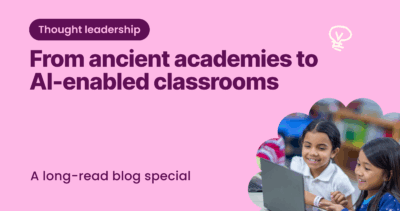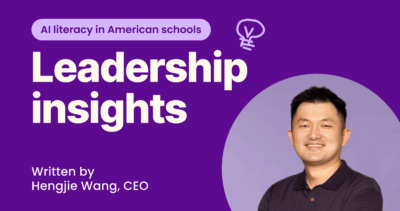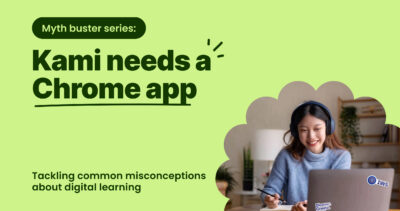
Shirin Bradfield
October is Learning Disabilities Awareness Month (and Dyslexia Awareness Month) — a time to reflect on, and increase awareness about, the millions of learners who have specific learning disabilities, learning differences, or learning disorders. It’s a time to share tools, strategies, and initiatives to make the school year more enabling and productive for those who need it most.
Not all learners are the same, and classrooms across the world will have assistive technologies and IEPs (individual education plans) to best support students. The National Center for Learning Disabilities states that 1 in 5 students (in the USA) have learning or attention issues, such as autism, ADHD (attention deficit hyperactivity disorder), dyslexia, dysgraphia, and dyscalculia.
Take N.O.T.E
According to Understood, an online guide for families of those with learning disabilities, 70 million Americans have learning and thinking differences. Understood has developed a simple step-by-step tool to help families identify possible learning and thinking differences in their young ones. Take N.O.T.E is a free, interactive, web-based experience available in English and Spanish.
- Notice if there’s something going on with your child that’s out of the ordinary.
- Observe and keep track of patterns.
- Talk with other people who can help support your child, like pediatricians, teachers, and other caregivers.
- Engage your child to get information and explore options for what to do next.
The effect of the pandemic on learning disabilities
According to the Contemporary PEDS Journal, “the pandemic has disrupted academic progress, and children with learning disabilities, in particular, have been impacted.” Many students with learning disabilities have been unable to adapt to learning online, and being distanced from the physical classroom has negatively impacted their progress. However, it’s not all bad news. The need to adapt to remote learning environments has resulted in a drive for increased digital accessibility such as the tools and features available in Kami — check out our video! Students with learning disabilities returning to the physical classroom are now able to incorporate blended learning strategies to best suit their educational needs.
What you can do this LD Awareness Month
This month is all about awareness and advocacy. It’s a time to share accurate information and reliable statistics with your students and to have open and meaningful discussions about learning disabilities.
Here are some ideas for the classroom:
- Use these cited 35 Crucial Disability Statistics & Facts to Know in 2022 to begin meaningful discussions about learning disabilities and their impact.
- If you teach high school students, students can create a social media campaign to promote LD Awareness Month.
- If you teach younger grade levels, students can create informational posters about some of the more common learning disabilities and how to support those who have them.
- Have your students write transactional letters to the U.S. Department of Education or the Learning Disabilities Association of America informing them of the challenges the pandemic posed for those with learning disabilities.
Kami’s designed with learning disabilities in mind
Did you know that Kami has an extensive range of tools and features to empower all students to love learning?
Here’s a rundown of some of our most loved accessibility features:
- The fully customizable Read Aloud tool supports students with visual impairments.
- Dyslexic students are supported by using Open Dyslexic and Lexend fonts to assist with reading.
- Closed captions are available on Kami video tools, including YouTube, Video Comments, and Screen Capture.
- With the Voice Typing tool, students can type using only their voice.
- For students unable to use a touch-screen device, the Keyboard Accessibility feature allows them to navigate Kami using only keyboard controls.
- Keyboard shortcuts simplify tasks for students.
- Using the Dictionary tool, students can highlight any word to get an instant OED definition.
Although we have an awesome selection of accessibility tools and features, we work closely with our classroom heroes and are constantly adapting and adding to them.
Whether learning disabilities directly affect you or someone you know, it’s super important to be aware of the community around you. A learning disability does not have to be a barrier to education, and this month is all about increasing awareness of the need for learning access for all. So make sure you increase awareness in your classroom and put Learning Disability Awareness Month on your classroom calendar!
You may also like

From ancient academies to AI-enabled classrooms

Improving AI literacy in American schools

